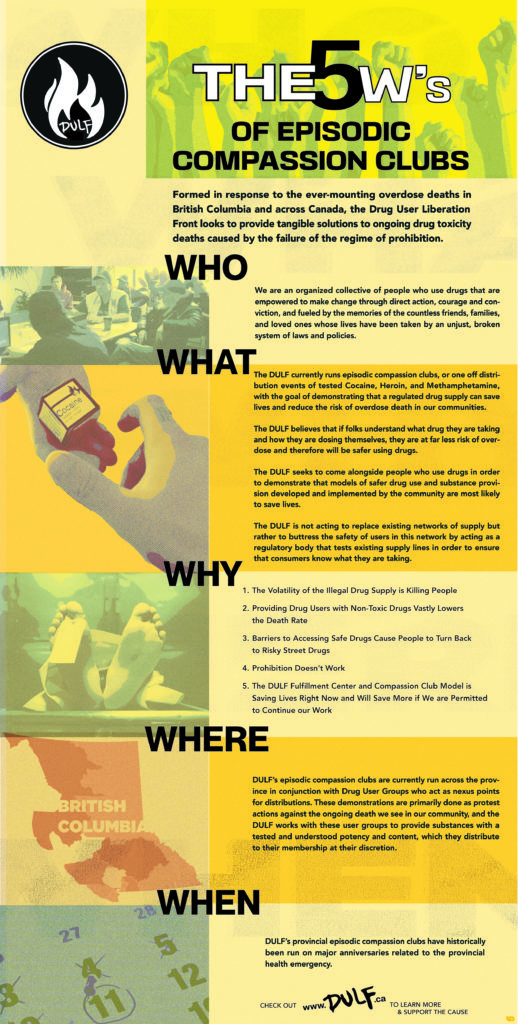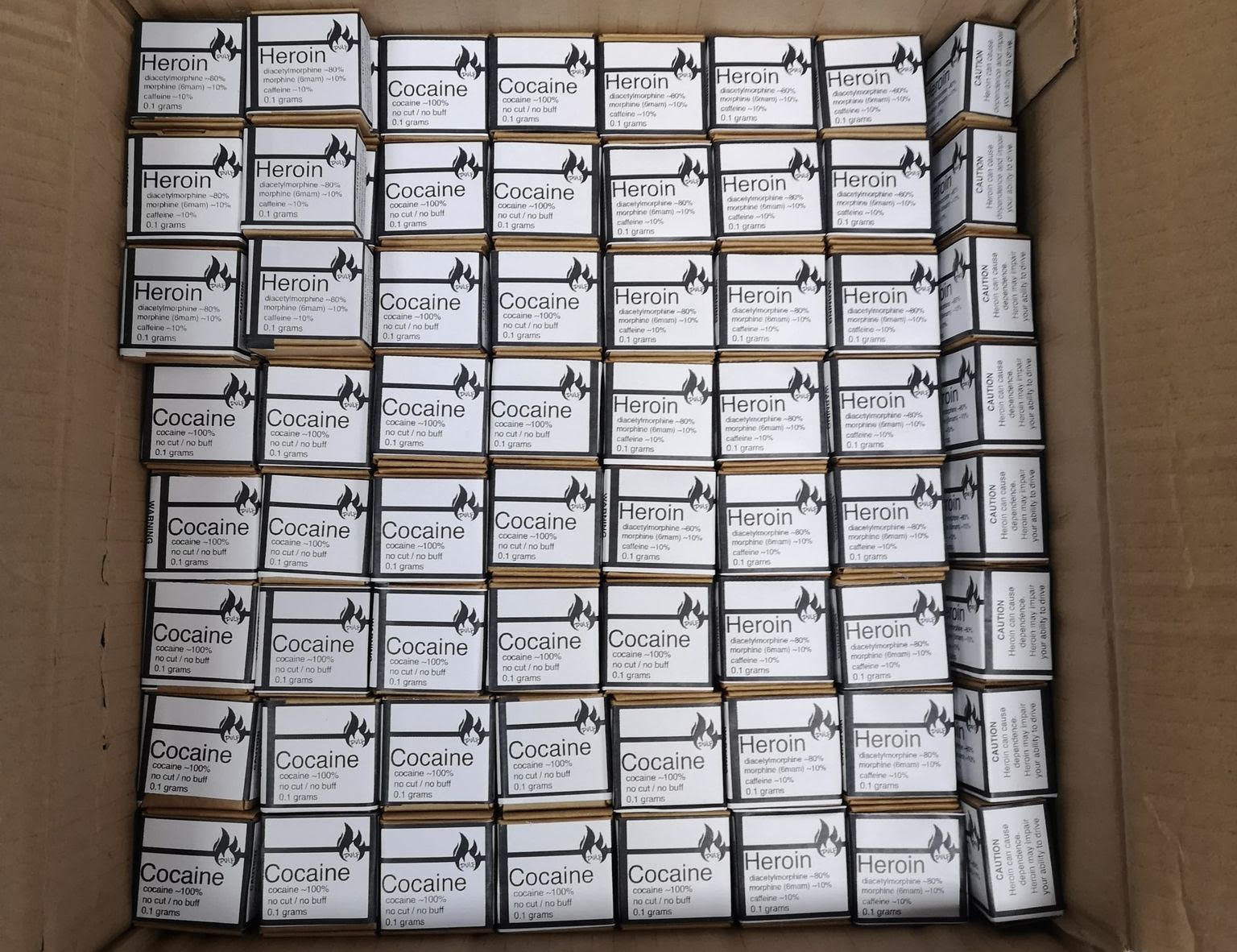On May 4 in Vancouver’s Downtown Eastside, the Drug User Liberation Front (DULF) distributed 3.5 grams each of fentanyl-free heroin, cocaine and methamphetamine to members of the Western Aboriginal Harm Reduction Society. The action, dedicated to the 165 people in British Columbia recorded to have died of drug toxicity in March 2022, comes in the wake of Health Canada’s de facto rejection of DULF’s bid to distribute safe supply legally through a compassion club model.
On April 21, nearly eight months after receiving the organization’s section 56 exemption request, Health Canada notified DULF that it did not intend to approve it. DULF is now in the position of relitigating its request to a government that appears unwilling to consider it seriously and has ignored most of its attempts to get in touch. The British Columbia Coroners Service has recorded 1,333 drug toxicity deaths since DULF sent its initial request.
“As the life expectancy plummets in our neighborhood, we are stricken with grief that Health Canada has decided to threaten rejection.”
Section 56 of Canada’s Controlled Drugs and Substances Act governs the possession and distribution of state-banned drugs. It stands between DULF and the ability to work with federally regulated pharmaceutical suppliers, or at minimum to keep doing what it’s been doing—sourcing drugs from dark web sellers and checking the supply for fentanyl and other adulterants—without fear of reprisal.
The Minister of Health can waive section 56 for DULF and all participating compassion club members if they acknowledge that a safe drug supply is in the public interest. DULF’s proposal is backed by a number of public health entities including the Vancouver City Council and the First Nations Health Authority.
“As the life expectancy plummets in our neighborhood, we are stricken with grief that Health Canada has decided to threaten rejection of a regulatory framework that could be immediately scaled up and save lives now,” DULF cofounder Eris Nyx told Filter. “It seems the government has abandoned the notion of contributing to an ongoing spirit of collaboration.”

DULF had offered two pathways to sourcing nonmedical safe supply: pharmaceutical sellers (preferred, but not possible without a section 56 exemption) and illicit dark web sellers (a stopgap DULF would continue to use in the absence of such an exemption). Health Canada based its evaluation only on the latter. While it left the door open for an exemption specific to licit suppliers, it essentially invited DULF to start the same application process from scratch.
The most specific piece of information it claimed to be lacking was the names of licensed suppliers prepared to work with DULF, which though not a part of the original exemption request have been formally provided multiple times in the months since.
“Given the Kafkaesque response that we have received in response to our desperate plea to save the people we love most, we have done our best to respond to their qualms,” Nyx said. DULF’s distribution events will continue periodically while the organizers are “gearing up to run a sustainable lifesaving model, with or without legislative backing.”
Since its first safe supply distribution in June 2020, DULF has been increasing the frequency of such events and is currently holding about one a month, keeping pace with BC Coroners Service updates on drug toxicity deaths.
The BC Coroners Service reports have come to include acknowledgments that the number of recorded drug toxicity deaths at safe consumption sites or from medically prescribed safe supply is zero. It does not include records related to safe supply outside the medical model, but we can infer that the number of deaths from nonprescribed safe supply is also zero; DULF is the only known provider, and none of its 3,050 boxes of safe supply distributed to date has caused an overdose—fatal or otherwise.
Photograph of safe supply distributed on May 4 and inset graphic courtesy of the Drug User Liberation Front





Show Comments